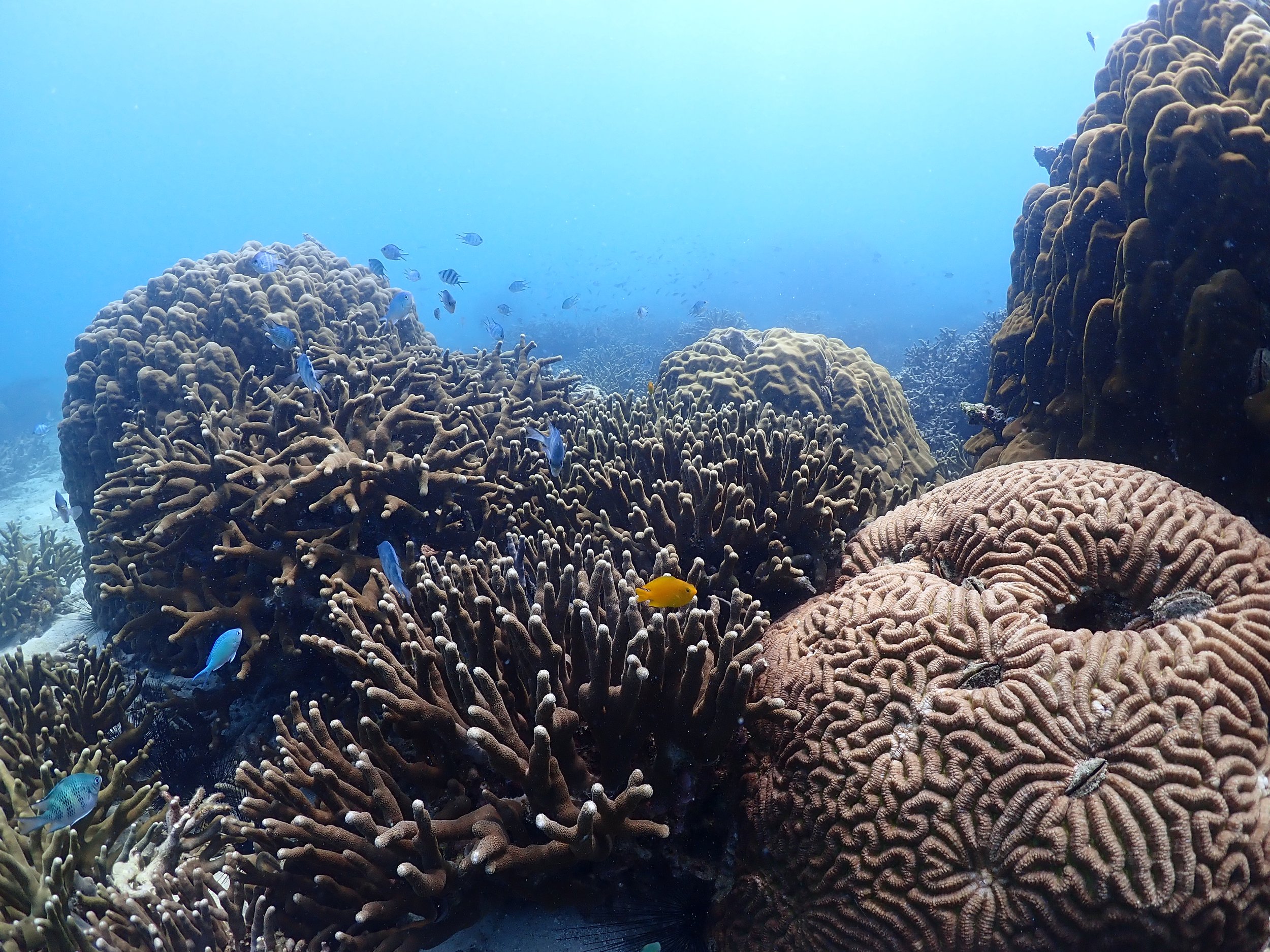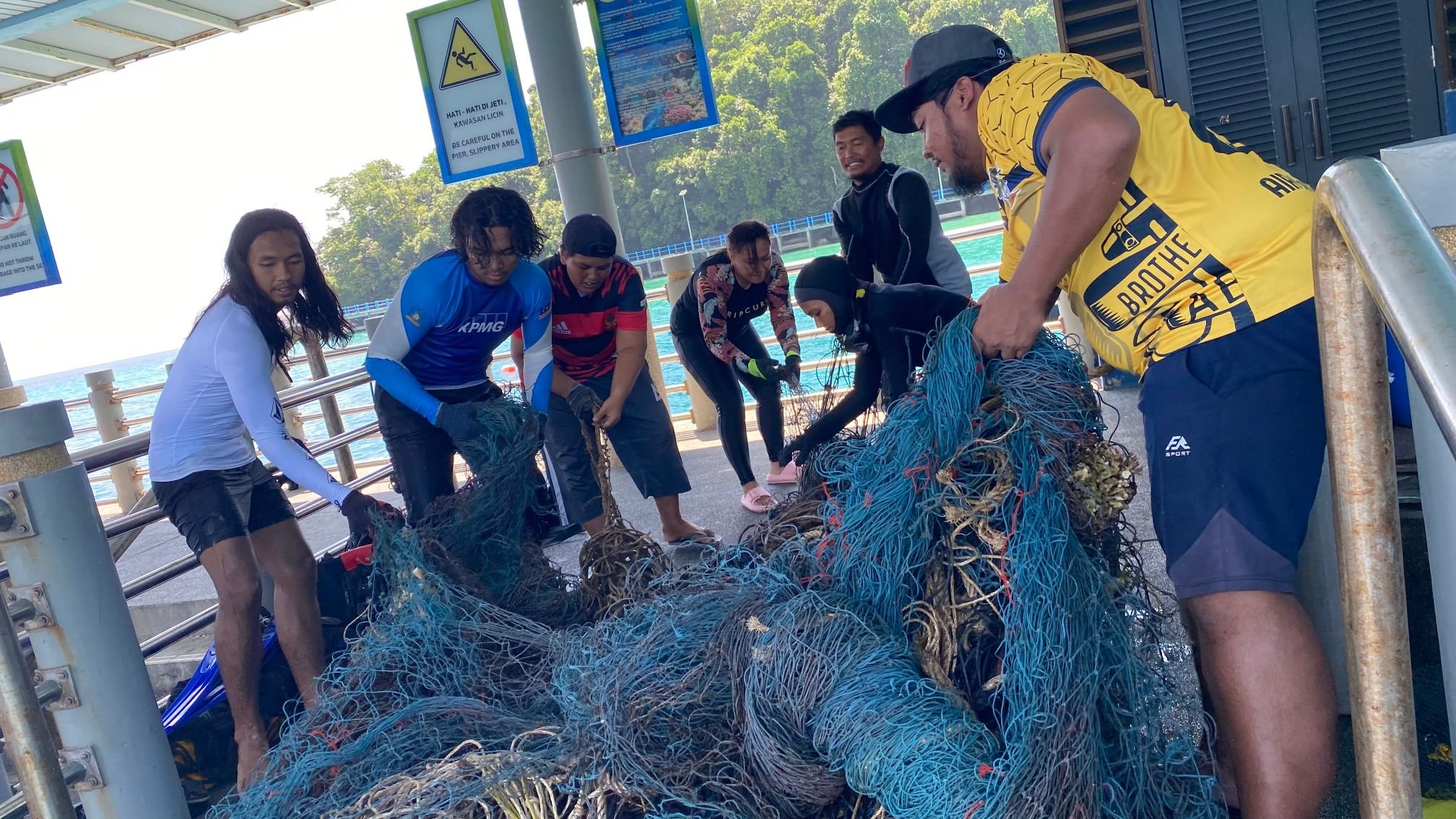Our Corals Are Bleaching
I recently wrote about the coral bleaching that is happening right now around Malaysia.
Since that post just a few days ago, monitoring data has shown that in some areas up to 80% of corals are bleaching.
What are we doing now?
Managing Coral Bleaching – Removing Coral Predators
As noted previously, there is little we can do on a local level, but we are doing what we can.
Bleached coral reefs are vulnerable to attack by predators including the crown of thorns starfish (COTs) and drupella snails – both are corallivores, and they eat corals. So, our field teams are doing their best to identify sites worst affected by these corallivores and will try to remove them where possible.
If you go diving, please help us by letting us know if you see a site with either COTs or drupella. You can let us know by emailing us at hello@reefcheck.org.my.
Crown-of-thorns starfish (COT) removal by the Redang Marine Conservation Group (RMCG)
Managing Coral Bleaching – Reducing Physical Impacts to Corals
Reducing physical impacts from divers and snorkelers, especially at important, resilient, sites is another immediate response we can take.
At the recent Malaysia International Dive Exhibition (MIDE) during the Ocean day weekend, I spoke to a number of dive operators who are concerned about bleaching and asked what they could do to help. Many of them agreed with the need to avoid vulnerable or important reef sites and we are communicating with them now on which sites they should avoid.
If you are planning a trip, you can help by asking your dive operator if they are observing the advice on avoiding these sites.
We need to avoid vulnerable or important reef sites
Managing Coral Bleaching – Continued Coral Bleaching Monitoring
Finally, continued monitoring is important.
At the moment we are tracking the onset and spread of bleaching.
Only over the next few weeks will we be able to see the real impact of the bleaching – what level of mortality and survival will we see? Are there any signs that corals are adapting to warmer temperatures? And what does all this mean to reef users?
So, please continue to report coral bleaching if you are going diving; we need all the data we can get.
Report coral bleaching to us!
You Can Make A Difference
It’s going to be some weeks – or even months – before the picture becomes clearer. In the meantime, we must all do what we can to protect reefs from local impacts.
No, it doesn’t fix the bigger problem of global heating; but it’s the little bit that we can each do to make our own contribution to conserving these important ecosystems.
Please contact me at julian@reefcheck.org.my if you have any questions or want to know more about bleaching.
______________________________________________________________________________________
If you'd like to support us, you can follow our social media pages for any updates on our work and volunteering opportunities, or you could also donate towards our cause.














